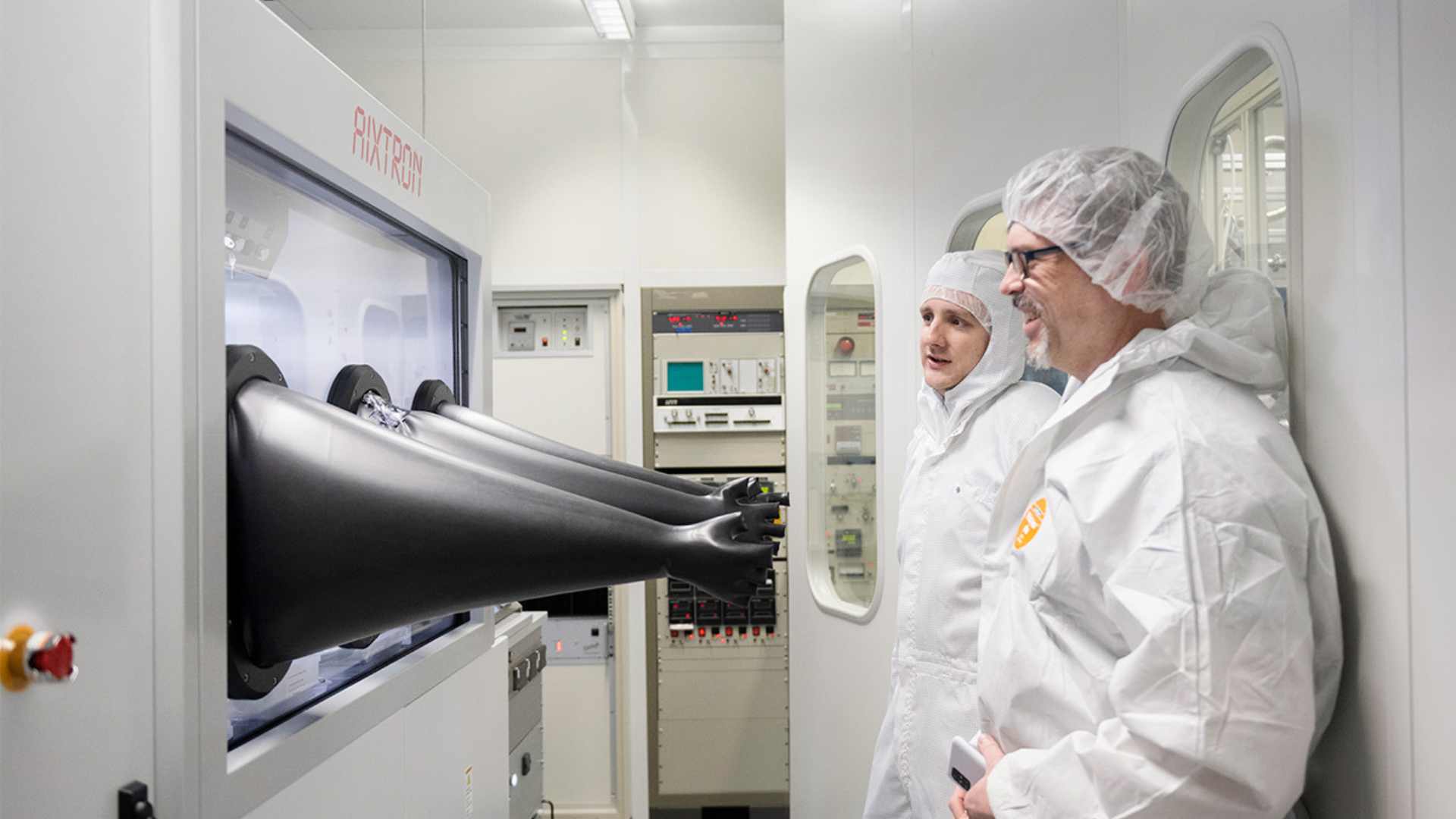
A tour through the terahertz integration centre.
At the heart of high-frequency technology
- von Jennifer Meina
- 21.09.2023
They can be used to detect skin cancer, determine the water content of a plant, measure material thickness, or send huge data packets. Terahertz waves are enormous, as are the manufacturing and equipment costs – or they were until now, at least, because Duisburg scientists are working to change that.
Everything from a single source – that’s the goal Dr Nils Weimann and his team have set themselves. The professor of semiconductor technology at the Faculty of Engineering and head of the ‘Components for High Frequency Electronics’ research group is building up Germany’s first terahertz integration centre in collaboration with three UDE colleagues. ‘We form an internationally recognized hub for terahertz research together with other network partners, especially from North Rhine-Westphalia.’ One advantage of the location is that the entire technology chain is located here, from the manufacture of semiconductor material and the production of chips to the production of modules and special terahertz measuring technologies. More than seven million euros in state and EU funding is flowing into the Centre for Semiconductor Technology and Optoelectronics (ZHO) in Duisburg. ‘Terahertz waves will provide more capacity in future mobile communications networks – the keyword is 6G. But the technology is capable of much more than just transferring hundreds of gigabits per second,’ stresses Weimann. ‘It also enables robots and machines to determine the exact position of objects and simultaneously to learn something about their material properties, in what we call “communication and sensing” in future wireless networks. Terahertz waves have enormous potential.’
Experience tour through the terahertz integration centre in our Research Magazine
Post-Views: 7819
